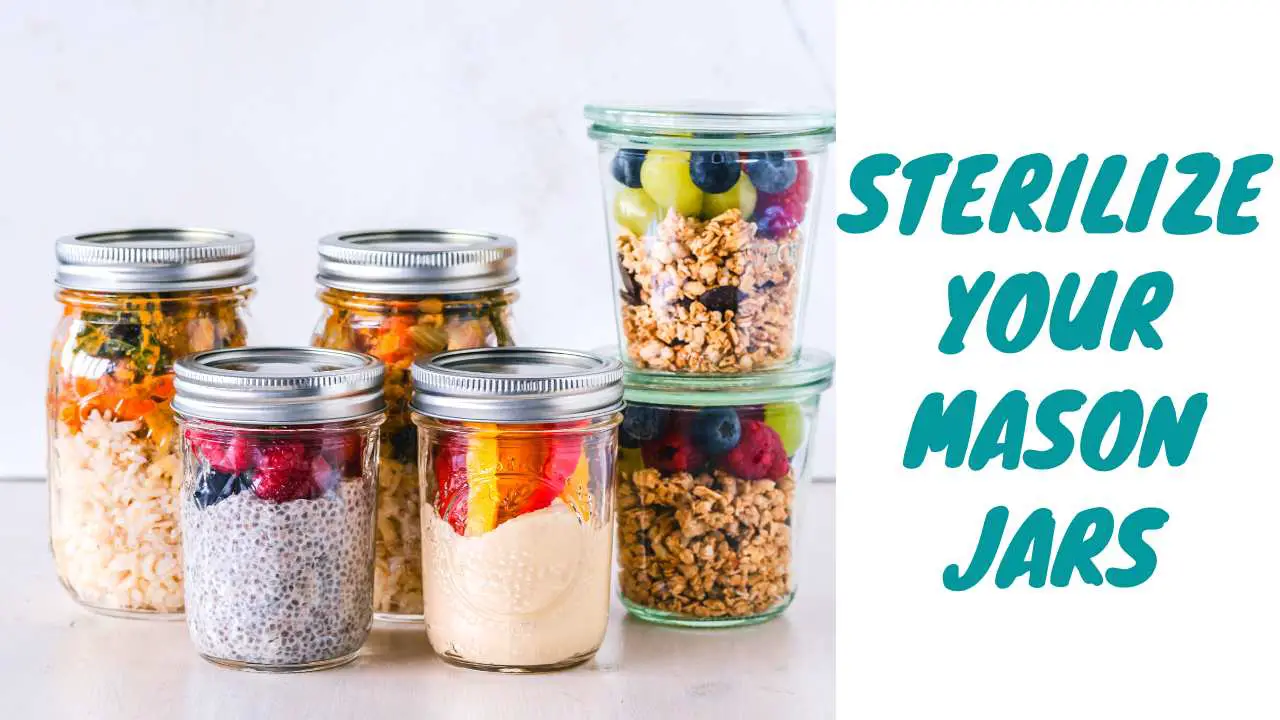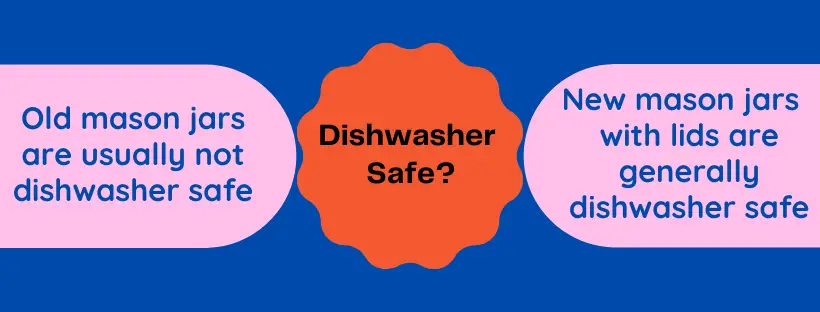
Mason jars are part of the kitchen decor. Their aesthetic appeal has been alive and well throughout the decades.
With time, we invented numerous fashionable ways to use them. Whether you want to stash grandmother’s secret herbs somewhere safe, line up lime pickles, honey, or even make a DIY backyard picnic drink in it, it has got you covered.

A mason jar is a work of elegant craftsmanship in its shape and structure, but keeping it nice and shiny might be tricky. It’s not exactly the most convenient to clean; the same body we adore comes back to haunt us for its many nooks to reach.
And soon, we look for an excuse, like relying on dishwashers. But are mason jars dishwasher safe? If so, what kinds? We’re here to dig deep with our fingers into the end of all mason jars.
Quick question:
A) Are Mason Jars Dishwasher Safe? How to tell?
Most mason jars are dishwasher safe, but a good rule of thumb is to notice how old they are.
- Old mason jars are usually not dishwasher safe, especially if you notice the good old wire bail lock system. They indicate their archaic build, and hence you are better off washing them manually.
- New mason jars come with regular lids and are generally dishwasher safe, so that’s cleared now!

B) Well, How About Mason Jar Lids, Are They Dishwasher Safe?
Unlike the main course, the appetizer passes the dishwasher safety test. Mason jar lids are peas in a pod inside dishwashers, and the top racks will come to good use for them. They love the hot water sprays and the brushing; hence, people would boil them first before washing them manually in the old days.
Here’s the catch though, it’s encouraged that you wash them by hands because they are prone to rust the more you wash them. So you’re better off with lighter washes manually then vigorous walkthroughs in the dishwasher for those poor lids.
If you’re wondering how to wash mason jar lids, let’s get to it.
Washing Mason Jar Lids Manually
- If you own multiple mason jars, separate all the lids and put them in a large container.
- Fill the container with white distilled vinegar, enough to soak the lids all the way through.
- Place each lid, ensuring there’s enough room, in the container.
- Set a timer for thirty minutes and let the covers soak.
- After the timer rings, use a soft brush and scrub gently at each edge and corner.
- Wash with clean water.
- Give it a repeat wash with hot and soapy detergent water and air dry after.

